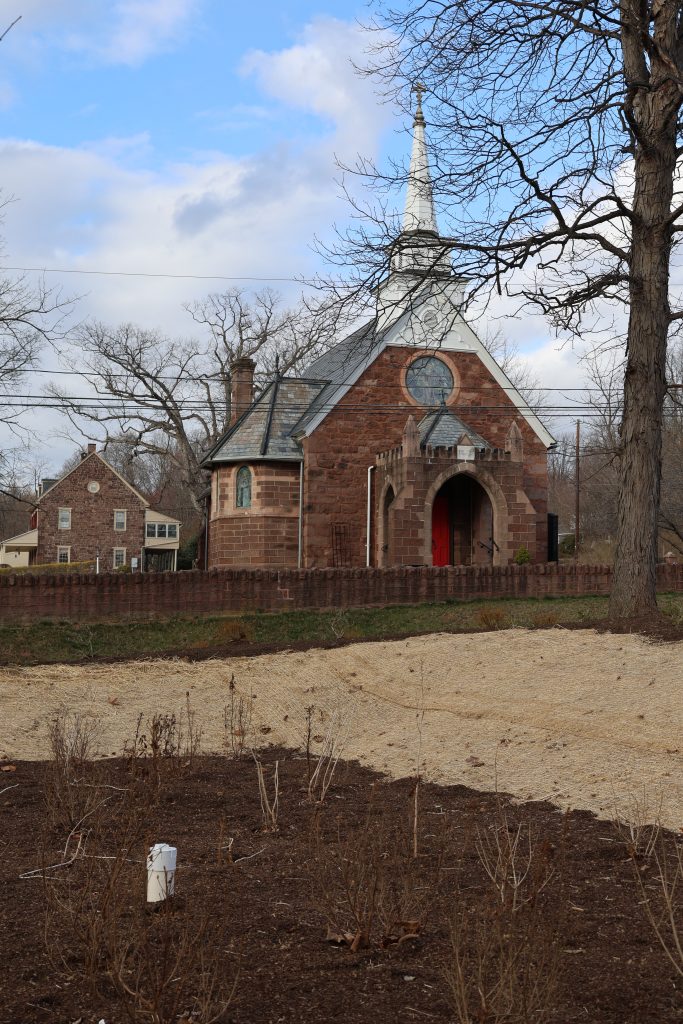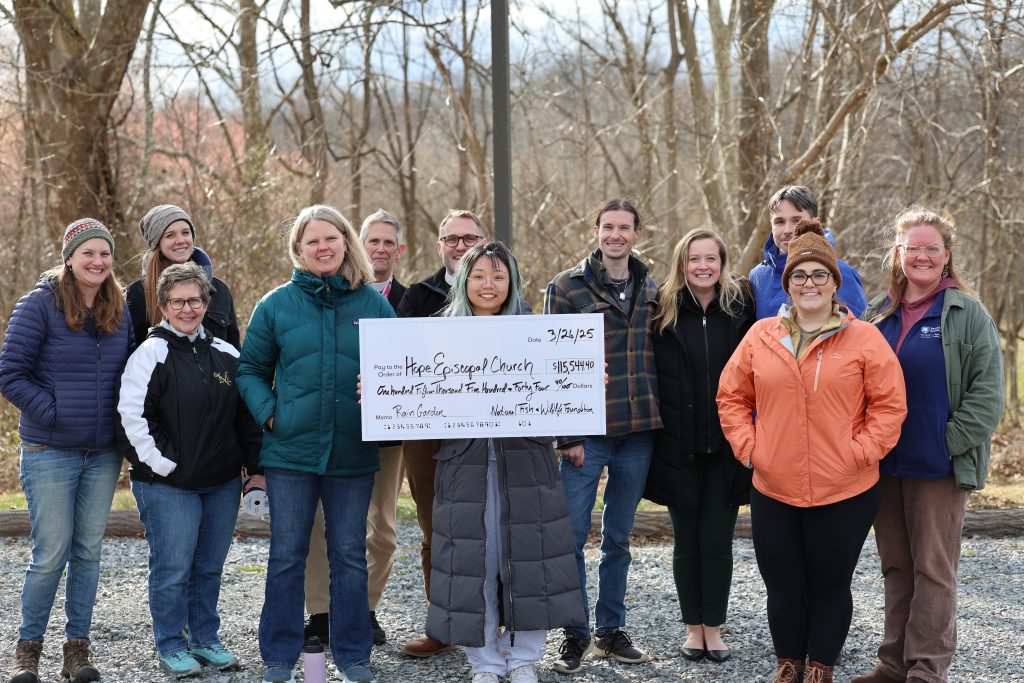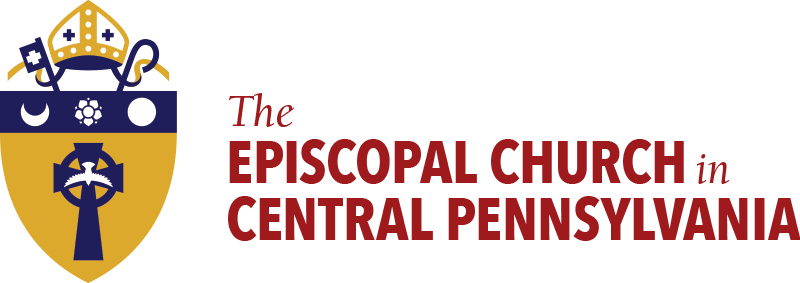By the Rev. Bradley Mattson
Rector, Hope Episcopal Church, Manheim

On a clear spring evening, members of Hope Episcopal Church gathered with neighbors, environmental partners, and friends from across the diocese for an event that brought together learning, gratitude, and faithful witness.
We began in the parish house with a creation care expo, where guests were welcomed to a room full of conversation and shared knowledge. Partners from across the region – scientists, conservationists, township representatives, and members of interfaith coalitions – brought displays, tools, and encouragement to help people understand both the urgency and the joy of caring for creation. Their work connected practical action with long-term vision, and reminded us that the future of our water and land depends on collaboration.
From the beginning, this project at Hope was guided by a growing network of trusted partners and public advocates. We were proud to host and give thanks for:
- Interfaith Partners for the Chesapeake
- Lancaster Clean Water Partners
- Center for Watershed Protection
- Penn State Agriculture and Environment Center
- Penn Township
- Flyway Excavation
- and all those who stayed to help us dream, plan, and plant this new beginning.
After the expo, the group moved outdoors for a ribbon cutting ceremony at the edge of our new bioswale and rain garden, located just across the street on the church’s 17-acre property. Our Bishop, the Rt. Rev. Audrey Scanlan, offered a blessing and joined in the ribbon cutting as children, longtime members, and visitors looked on.
The bioswale, now planted with native species and carefully designed to slow and filter stormwater runoff, is both a conservation measure, and a visible sign of what happens when a church chooses to serve – not only its members, but its watershed, neighbors, and those downstream. The work will continue with a “Green Master Plan” that will continue to develop and be funded by the public money resources provided in the grant which funded the bioswale’s creation.
As the gracious light of the evening began to fade, we made our way back into the church sanctuary for an instructional Eucharist, offered with deep reverence and rooted in creation-centered theology. From the windows of the sanctuary, you can look out over the newly planted garden – where water will now move more gently and where new life is already taking hold.
The Eucharistic Prayer used that evening was developed right here at Hope – crafted for moments like this when the sacrament and the soil feel especially close. Our worship bulletin included a reflection on Creation Care ministries in The Episcopal Church, The Way of Love, and our parish’s Indigenous Land Acknowledgment and Policy for Reconciliation. During the Prayers of the People, we named each partner organization out loud, prayed for all who live downstream, and gave thanks to God for the gift of earth and water, and for the Church’s calling to serve with humility and hope.
Of course, the project began well before last week’s gathering. It started with questions, continued with conversations, and flowed from the belief in the transforming power of the gospel of Jesus Christ. From there came planning, prayer, and partnership.
And now, something new is growing. Not just in the soil, but in us.

We didn’t do this just because it seemed like the right thing to do. We did it because it’s part of how we, through this work, have begun to understand the Gospel. Jesus told us to love our neighbor, and one of the clearest ways we can do that is by loving those downstream. Quite literally. What leaves our property – whether through runoff or reverence – becomes part of someone else’s story. Now, it carries a little more hope with it.
We did this because Paul’s words still hold true. We are to work out our salvation with awe and reverence. For us, this project became one small way of doing just that – with a dose of public witness, with presence and prayer, with plants and partners, with bread and wine and soil.
We did this because we believe the Church is not just here to preserve its history – it’s here to live its mission.
I know it’s easy to worry about what people might think when doing the work of creation care today. To fear we’re letting someone down by trying something new or unfamiliar or “political.” But more and more, I find myself wondering if we’re asking the wrong question. Maybe we should be less concerned about who we are letting down, and more concerned about who we are helping up.
This project has helped people up. Stormwater management helps up families worried about flooding, water quality, and erosion. It helps up children who now know the names of the plants in the garden because of instructional signs that will be installed. It helped up a congregation ready to say yes to public faith. And it helped up those downstream, who may never know our names, but will feel the effect of this work.
Soon, our new diocese will bear the name of the Susquehanna River – that mighty waterway which receives what we pour into it. And I can’t think of a better way to begin that next chapter than by tending carefully, and lovingly, to what flows from our own corner of it.
We’ve shared photos of the evening – faces smiling at the ribbon cutting, volunteers standing in the garden, the sanctuary filled with gentle light. But what we really hope people see is the invitation beneath the image: to join in, to begin, to believe this is part of our calling.
If your congregation is wondering where to start, we’d be glad to walk alongside you. We didn’t begin with a perfect plan. We began with prayer, and a faithful green team who saw the work through.
May Jesus be our “hope, always.”
Read more about this project in this Episcopal News Service article.
